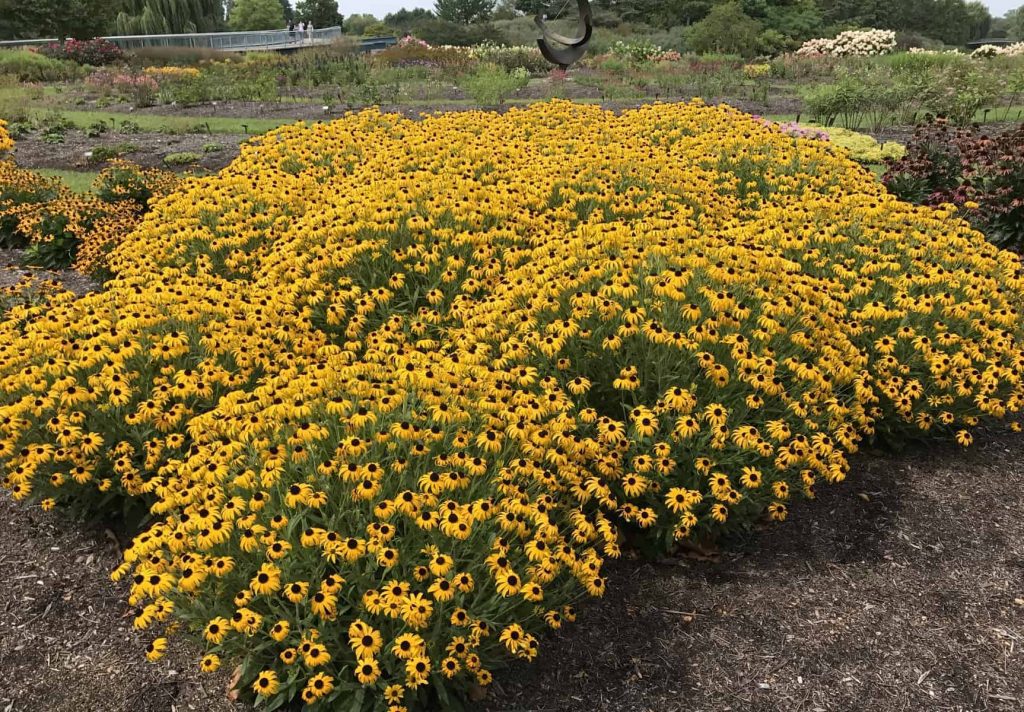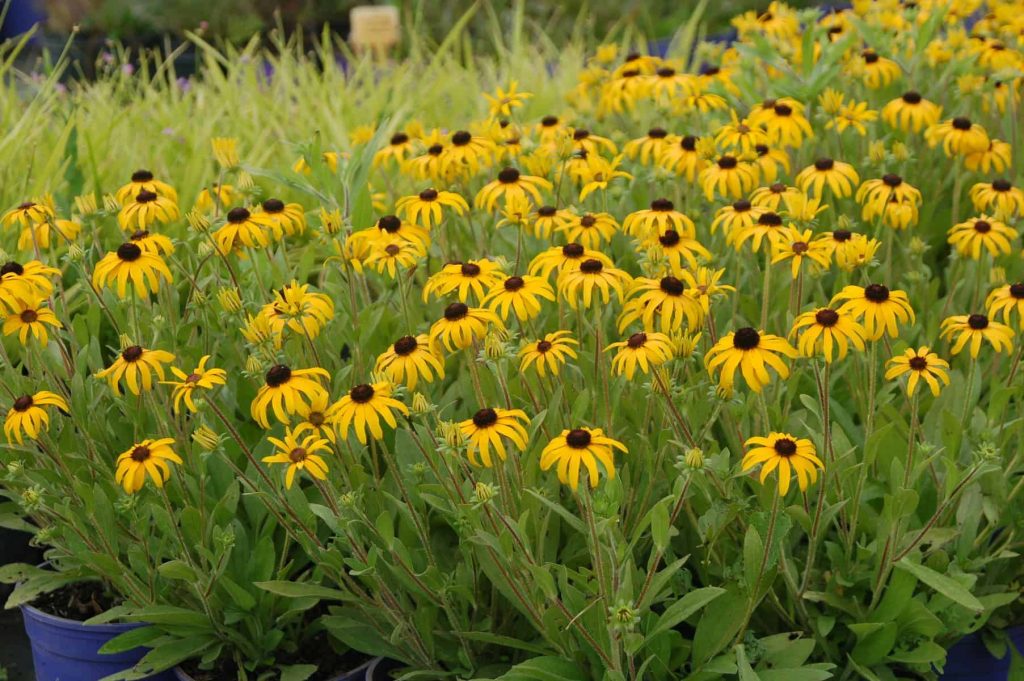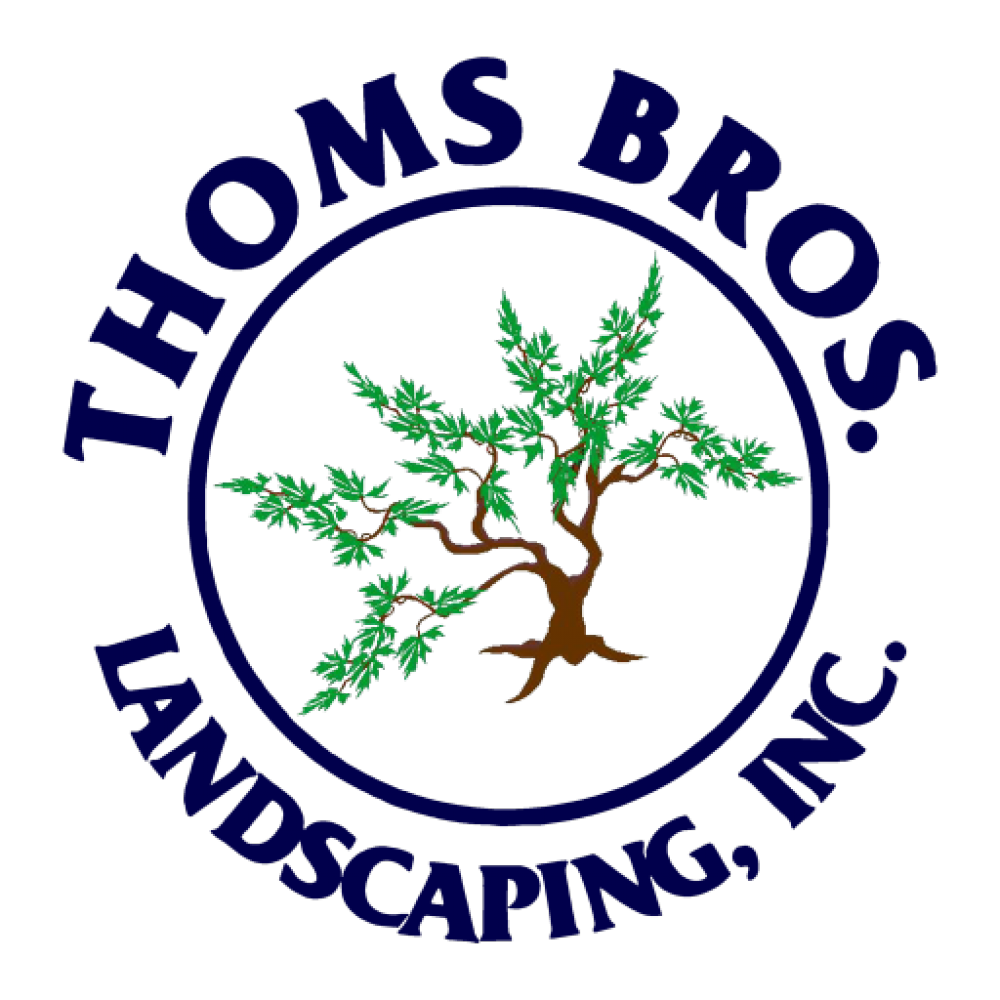Reprinted from perennialplant.org/page/2023PPOY
At the height of summer, ‘American Gold Rush’ black-eyed Susan turns up the volume for a long season of dazzling color right up to autumnal frosts. The bright golden-yellow flowers feature arching rays and a reddish halo surrounding dark chocolate cones. Three-inch flowers blanket the compact plant, only 22-27 inches tall with a broader width to 40 inches if given room to grow.

The green leaves and stems are covered in hairs, which gives them a silvery cast—on sunny days, peeking through the blooms to the leaves is a luminous silver-and-gold treat. More than just boosting the ornamental show, the hairy foliage is resistant to Septoria leaf spot—a debilitating fungal disease that causes unsightly black spotting and premature seasonal decline on some black-eyed Susans. ‘American Gold Rush’ is a reliable hardy perennial and a great substitute for popular, brassier ‘Goldsturm’, which is highly susceptible to leaf spotting.

‘American Gold Rush’ is a stunning focal point in perennial borders and meadows and is brilliant when massed in public or corporate landscapes. Butterflies caper over the blooms and songbirds feast on the plentiful seed long after the flowers have passed—the seedheads provide winter interest too. Garden companions are many, including alliums, asters, sages, and native grasses such as little bluestem (Schizachyrium scoparium) and prairie dropseed (Sporobolus heterolepis).

‘American Gold Rush’, is also a 2020 AAS National Winner – one of the first winners from the collaborative PPA and AAS perennial trial. To top off the credentials of this award-winning selection, the National Garden Bureau has named 2023 the Year of Rudbeckia in their perennial class.

The Perennial Plant of the Year® (PPOY) program began in 1990 to showcase a perennial that is a standout among its competitors. Perennials chosen are suitable for a wide range of growing climates, require low maintenance, have multiple-season interest, and are relatively pest/disease-free. If you are looking for an excellent perennial for your next landscape project or something reliable for your gardens, make sure to check out the Perennial Plant of the Year® archive list.
Since the Perennial Plant of the Year® was introduced in 1990, the Perennial Plant Association has received frequent inquiries about how the Perennial Plant of the Year® is selected. The selection process is quite simple – PPA members vote for the Perennial Plant of the Year® each summer. At that time, in addition to the vote, each member may also nominate up to two plants for future consideration. The Perennial Plant of the Year® committee reviews the nominated perennials (more than 400 different perennials are often nominated each year) and selects 3 or 4 perennials to be placed on the ballot.
Nominations generally need to satisfy the following criteria:
- Suitability for a wide range of climatic conditions
- Low-maintenance requirements
- Relative pest- and disease-resistance
- Ready availability in the year of promotion
- Multiple seasons of ornamental interest
FROM THE BREEDER
From Brent Horvath:
I’ve always liked my plant introductions to speak for themselves and this one speaks volumes. From start to finish this plant is generally trouble free and easy to propagate, grow and finish in a container and a breeze to garden with. It started as an open pollinated seedling among several other related seedlings but quickly distinguished itself with clean disease free foliage, a naturally compact and rounded habit and beautiful presentation in a container over an extended bloom period.
It seems most attributes are improved with this hybrid of two Midwest US native plants and likely a third species was involved, only the bees know. Disease resistant thinner foliage, 2’ tall dome shaped habit, and a long bloom period of slightly lighter golden yellow colored flowers make this plant easier to combine with and stand out in the garden July into October.
PLANT DATA
Hardiness
USDA Zones 4 to 9; AHS Heat Zones 9-4
Light
Full sun to partial shade
Size
22-27 inches tall and up to 40 inches wide
Origin
Originated from open-pollinated seed sown from the seed parent Rudbeckia fulgida var. deamii. Introduced by Brent Horvath, Intrinsic Perennial Gardens, Hebron, llinois. 2020 All-America Selections Winner.
Rudbeckia fulgida var. deamii is native to the central states of Illinois, Indiana, and Ohio.
Soil
Average, well-drained soils. Adaptable to clay, alkaline or acid pH, and gravelly soils. May flop in rich, fertile soils.
Maintenance
Low-maintenance perennial plant. Cut back in late winter to early spring. Good heat- and drought-resistance once established. Reseeding does occur. Divide as needed to maintain robust habit.
Grower Notes
1 quart pots suitable for spring production but plant is better suited to 1-2 gallon pots if selling in flower. 8-10 week finish in a 1 gallon pot. Requires long days to bloom. Vernalization not required. Consistent flower set possible from a wk20 planting (unlike ‘Goldsturm’) making it well suited to multiple crops in production. Observed good resistance to downy mildew even when grown adjacent to infected varieties. With good drainage, average soil moisture and fertility produce high quality plants. Patent-protected.

